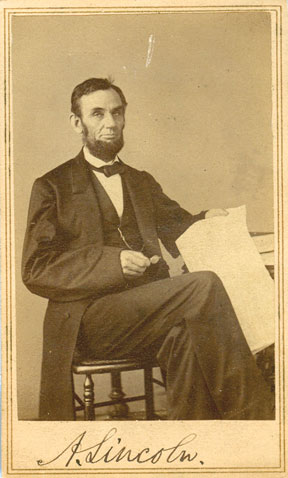
Autographs can provide a special sense of satisfaction for the collector.
By Kenneth Gloss
Collecting autographs has become more and more popular in recent years, as people have realized autographs are a great way to not just form a collection but also form a connection to the person whose signature you hold. When you read and touch a letter signed by a former president, or correspondence between two famous people, it’s like discovering a story in and of itself.
Presidential signatures are one of the most popular areas of autograph collecting. Most collectors prefer handwritten letters on presidential stationary, written while the president was actually in office. That is more valuable than from the days before he became president or in the days after he left office.
Another element that can make a difference in the value of a piece is its historical significance. A note from President John F. Kennedy thanking someone for a campaign donation isn’t worth nearly as much as a two to three page letter talking about the Cuban Missile Crisis, which would sell for a few hundred thousand dollars more. The better- known presidents are worth more, and are easier to authenticate, because there are more examples of their handwriting.
However, the rarest of presidential signatures is that of William Henry Harrison. He was president only for a short time and had pneumonia for most of his one-month presidency. There are very few signed documents left behind from his tenure and collectors find it very difficult to complete their presidential collection with Harrison.
If collecting presidential signatures, bear in mind the advent of the auto-pen. After President Kennedy, many presidential documents were either signed by secretaries or signed by automatic pens. These have become so good that it’s nearly impossible to tell the electronic version from the real signature. If it’s a quick thank you to a stranger, the chances are good that the president didn’t sign it himself. However, if it’s a letter to a close friend, he may have written his own name at the end. Your best bet is to deal with a reputable dealer who knows what they are doing, has vast experience in authenticating autographs and will stand behind their items, especially when it comes to sports memorabilia, one of the biggest areas of fraud.
If the cost of collecting presidential autographs is too high, consider collecting the signatures of first ladies. Generally, these autographs don’t sell for as much money, but be forewarned that they may be hard to get because first ladies generally don’t write as many letters.
The interesting part of collecting the letters of first ladies is that they tend to be more personal. I once came across a particularly memorable collection of Grace Coolidge’s letters, written to a friend of hers. In one of them, she wrote, “When you’re here, if you have time, please come to the White House for lunch. I understand if you’re too busy.” It struck me as funny that a First Lady would say that she’d understand if someone was too busy to come to the White House.
One of the more heart-wrenching books I came across was a copy of the inaugural addresses of from Washington to Kennedy. President John F. Kennedy was planning to sign and inscribe for all of his closest friends as a Christmas present in 1963, but he was assassinated in November. His widow, Jacqueline Kennedy, had the gift list and wrote an inscription to each of those people. Inside the book, she had written a two- to three-paragraph note that was touching and incredible. This book was worth tens of thousands of dollars.
You can also personalize your collection to your interests. I knew a man who collected presidential autographs, but only if they discussed food. For him, it was much easier to secure letters from earlier presidents because back then, we had an agriculture-based economy as opposed to modern presidents who don’t tend to discuss that topic in day-to-day business. This subject fit his interests because he was a chef who loved American History.
To me, letters are a source of history. E-mails disappear, but letters last and when you look at those archives, you can see the past. When you look at an author’s manuscript and see their hand-written notes, you actually see the thought process that went into that book, into every draft.
For example, I once held a first edition of Isaac Newton’s Mathamaticas that was worth $100,000 to $200,000. As I looked at it, I realized it was his personal copy. He had hand-written changes in it, his own notes and discoveries. Just holding it was an experience and it sent tingles up my spine.
To me, when you collect autographs, you’re holding something that that person held and touched. It brings you closer to them, to that moment in history. A great deal of collecting isn’t just finding the item, it’s really about where you bought it, from who m you bought it—it’s the experience. In your collection, that’s where the fun of collecting is really found.
Ken Gloss is the owner of the Brattle Book Shop in Boston, the oldest antiquarian bookstore in America. The Brattle Book Shop is celebrating the 63rd year of Gloss family ownership. For further information about book collecting, the shop and Ken’s free and open lectures, visit the Web site at: http://www.brattlebookshop.com or call 1-800-447-9595. Ken appears from time to time on PBS’ popular “Antiques Roadshow.
















Reader Comments